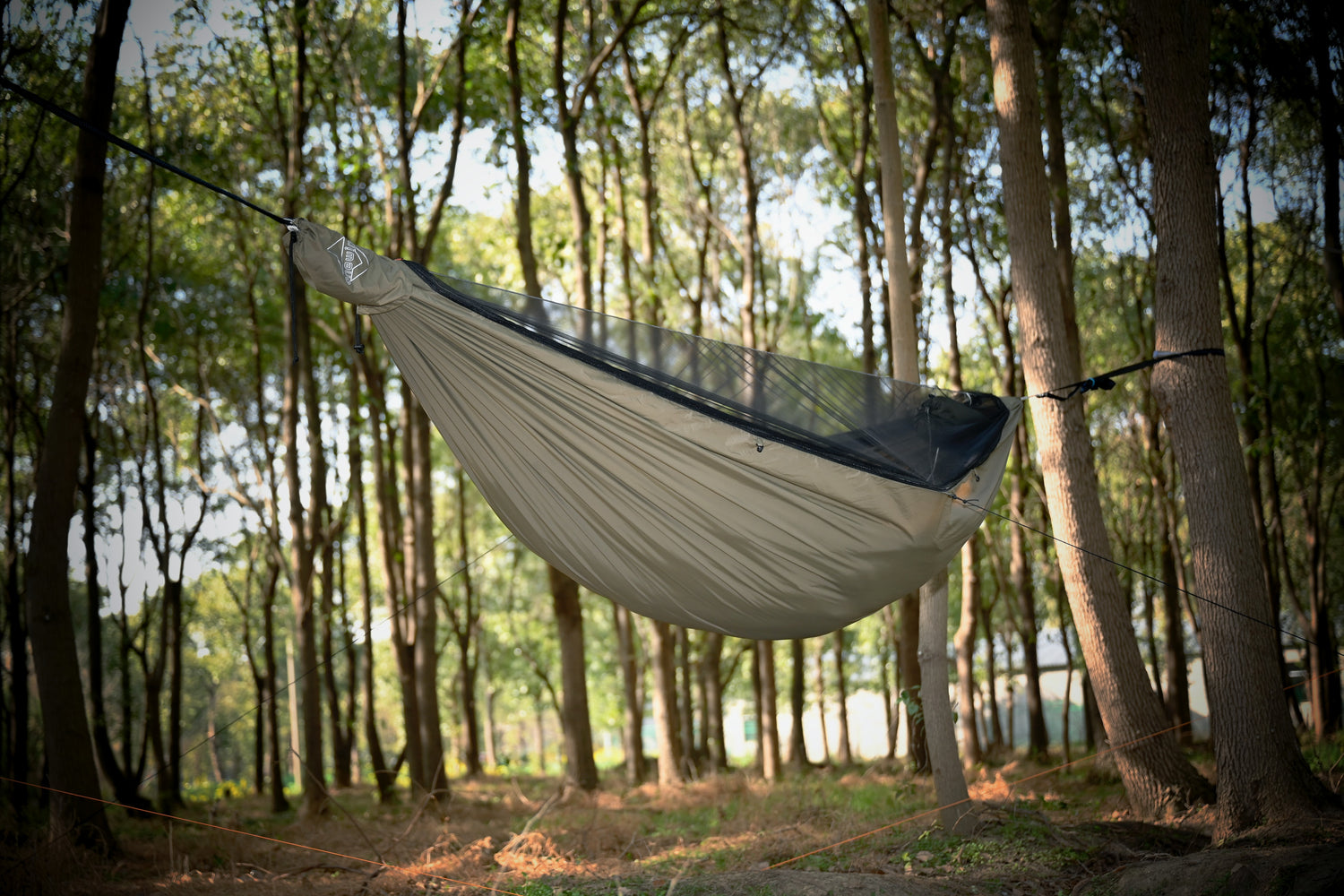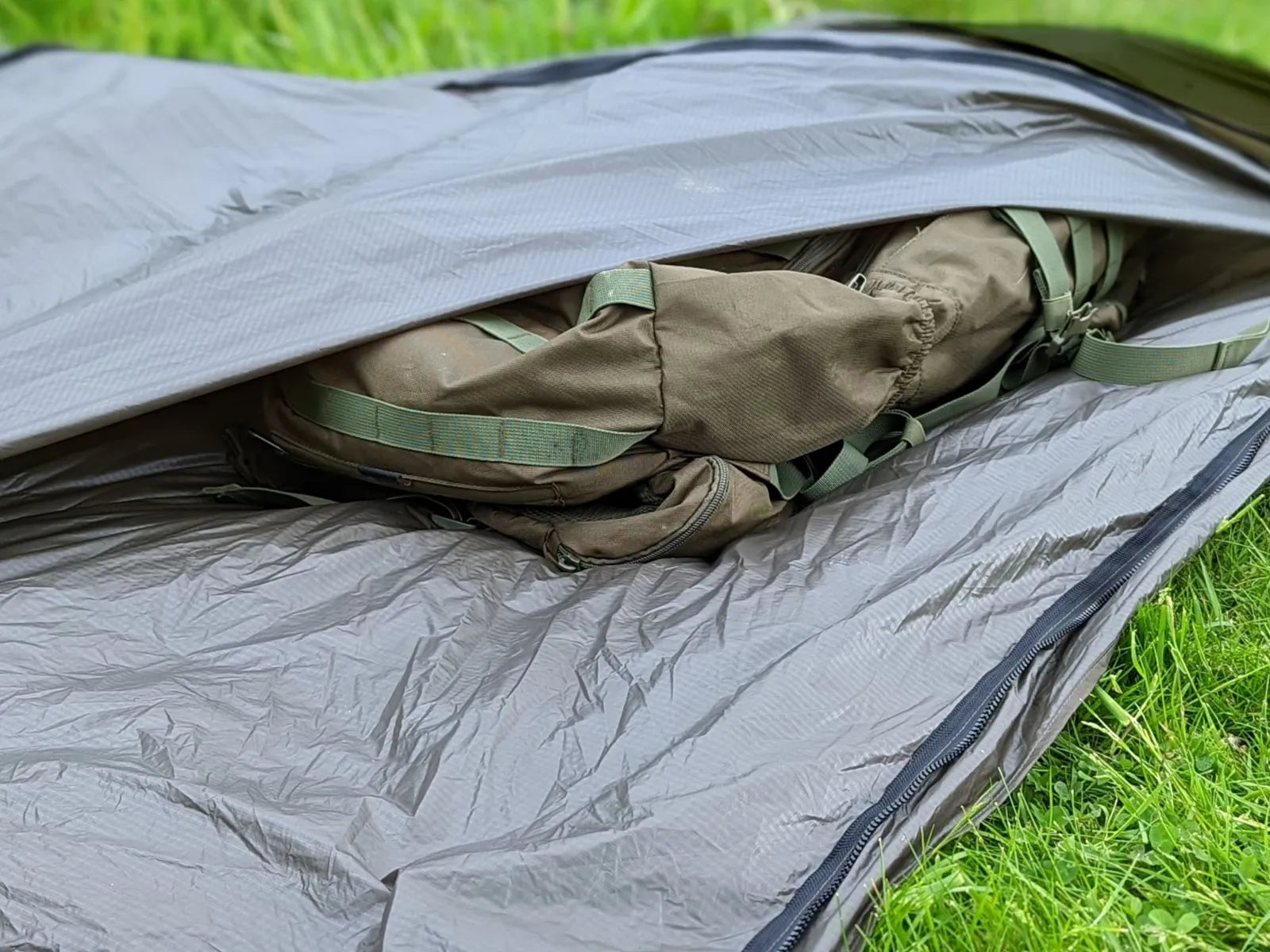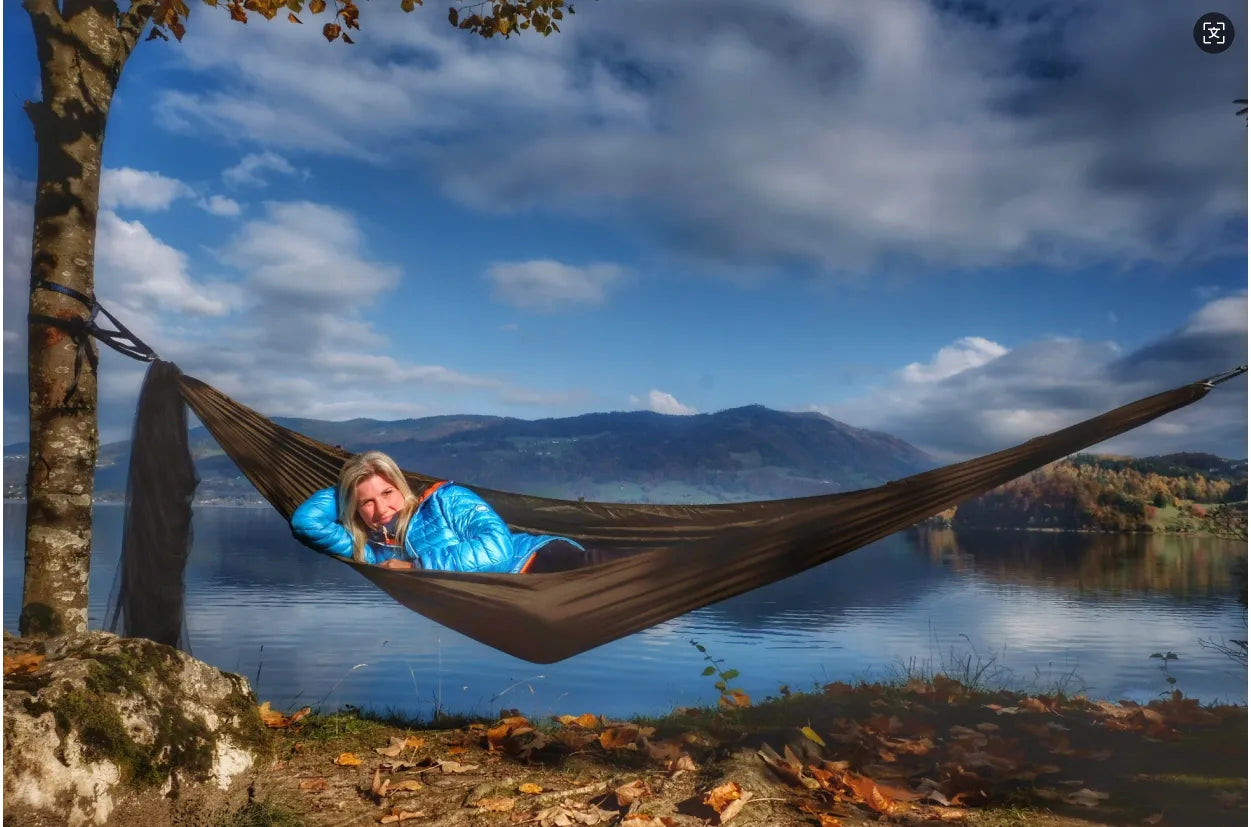Q: How big are Onewind hammocks?
Onewind has different sizes of double hammocks and single hammocks. 11' and 12' are the most popular gathering end hammocks.
Please view our website and choose the size that suits you.
Please make sure to check the spec page of the hammock you're interested in as each hammock is different.
Q: How to set up the tree straps correctly?
Hang your hammocks easily with these tips as a guide to ensure a solid setup.
Setting up the Single Layer Tree Straps
- Wrap the straps around the tree.
- Place the end with anchor points through the loop
- Pull the end with anchor points to tighten the straps and remember to insert the loose end of the tree straps into the elastic keeper.

Q: Which hammock end is the foot end and which the head end?
When setting up your hammock, You will notice that one end of the Ridgeline has tied to the hammock when it comes.
The other end is loose. You just put this end loop of the Ridgeline around the end of the hammock.

Q: How to set up the hammock Ridgeline?
Hold the outer cords of the Ridgeline. And pull inner cords at the same end of the Ridgeline.
For more information please check the video.

Q: What's the length of Hammock Ridgeline
When you first start out, it can be hard to define exactly how far apart the ends of your hammock need to be.
The common length of the Ridgeline is 83% of the total hammock bed length so an 11' hammock would need a 9'1.6" Ridgeline.
However, sometimes you need to adjust the length of the Ridgeline so that you will get a perfect amount of sag for you.
Q: How to lie to the hammock correctly?
After setting up the hammock. Make sure you spread the hammock fabric wide and sit in the center of the hammock bed.
Swing your legs in while using both hands to stabilize each side of the hammock so you can sit or lie safely.

Q: How to lie on the hammock comfortably?
The preferred sleeping method on a hammock is the diagonal lay.

Q: Is it OK to leave a hammock outside?
Yes, it's generally fine to leave a hammock outside, but its durability depends on the material, weather conditions, and the location. Hammocks made from nylon are better are better suited for outdoor use compared to traditional cotton hammocks. However, continuous exposure to sun, rain, and humidity can still deteriorate the material and cause color fading. Animals like squirrels, birds, and even cats may damage the fabric or suspension system. Additionally, leaving a hammock outdoors increases the likelihood of insects and spiders building nests or webs in it. It's wise to remove the hammock when not in use or during severe conditions to extend its lifespan.
To protect your hammock while keeping it outside, consider using a hammock cover or hammock snake skin. These accessories shield the hammock from harsh weather, reduce the risk of damage from animals, and prevent insects and spiders from making it their home, thereby enhancing the hammock's longevity and maintaining its condition. Regular maintenance and inspections for wear and tear are also recommended.
Q: Are hammocks better for your back?
The impact of a hammock on your back depends on various factors, including your sleeping position, the hammock's design, and your personal back health. Some people find that sleeping in a hammock can reduce pressure on their spine, allowing for a more relaxed back and potentially reducing pain. The gentle rocking motion of a hammock can also aid in faster sleep onset and deeper relaxation.
However, it's essential to note that hammocks may not be suitable for everyone, especially those with pre-existing back conditions. Sleeping in a hammock changes the way your spine aligns, which can be beneficial for some but problematic for others. It's recommended to use a hammock that allows you to lie diagonally, as this position helps maintain a flatter posture, reducing the risk of discomfort.
If you're considering using a hammock regularly for back issues, it's a good idea to consult with a healthcare professional to understand if it's suitable for your specific condition. Additionally, experimenting with different hammocks and positions to find the most comfortable and supportive option for your back is advisable.
Q: What size tarp is recommended for an 11-foot hammock?
For an 11-foot gathered-end hammock, which typically has a structural ridgeline length of about 9 feet (or 109.56 inches), a 11-foot tarp can suffice. This size tarp provides nearly 11 inches of coverage at each end of the hammock, which is a good balance between protection and weight savings.
However, many campers prefer a 12-foot tarp for their 11-foot hammock to ensure better weather protection. This larger tarp offers an extra 12 to 18 inches of coverage at each end, offering more shelter and peace of mind in diverse weather conditions.





